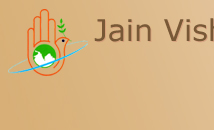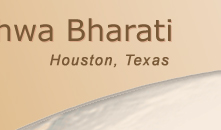 |
 |
 |
|
|
|
| Quiz on Preksha (answers at the bottom) |
- What is the meaning of Preksha? Why this system of Meditation has been nominated ‘Preksha Meditation?
- How many components are of this system and what they are?
- What is the basis of Preksha Meditation?
- What is the purpose of Preksha Meditation?
- What is the spiritual nature of Preksha?
- What is the scientific basis of Preksha?
- What is the procedure of Preksha?
- What are the major benefits of Preksha?
- What are the general benefits of Preksha?
- What are the physical benefits of Preksha?
- What are the mental benefits of Preksha?
- What are the emotional benefits of Preksha?
- What are the spiritual benefits of Preksha?
- What is the deference between seeing and thinking?
- What is the deference between conscious and mind?
- What is the works of mind?
- What is the meaning of Kayotsarg?
- Why one practices Kayotsarg?
- How many types of stress are counted and what is the strong means to release it?
- What is the cause of physical stress?
- What is the main cause of mental stress?
- What is the main cause of emotional stress?
- Why Antar-yatra is practiced?
- What is Dirgha-Shwas-Preksha (long breathing)?
- Why Dirgha-Shwas-Preksha (long breathing) is practiced?
- Why Shwas is taken a support while meditating?
- Why Shareer-Preksha is spiritually beneficial?
- What is Chaitanya Kendra ( Psychic Center )?
- How many and what they are?
- Where they are in the body?
- What is the benefit of practicing Chaitanya Kendra Preksha?
- Where do the emotions originate from?
- Which Psychic Center helps in developing the ability of knowledge?
- Which Psychic Center helps in pacifying the passion of anger?
- In making decision smart and developing the strength of mind which Psychic Center helps there?
- What is Leshya?
- What is Leshya Dhyan?
- What is the benefit of Leshya Dhyan?
- Where should it be concentrated for changing the negative emotions and with which color?
- Where should it be concentrated for transforming the sensual passions and with which color?
- Where should it be concentrated for awakening the intuition power and with which color?
- Where should it be concentrated for pacifying anger and with which color?
- Where should it be concentrated for developing the ability of knowledge and with which color?
- What is Anupreksha?
- What is Bhavna?
- Why is it necessary to know about Physiology for a practitioner of Preksha?
- What is cell?
- What is tissue?
- What is muscle?
- What is organ?
- What is body system?
- How many systems are in the human body? What are they?
- What is the skeletal system and how does it work ?
- What is the main work of muscular system?
- What is the main work of the respiratory system?
- What is the main work of the digestive system?
- What is the main work of the blood circulatory system?
- What is the main work of the nervous system?
- What is the main work of the endocrine system?
- What is the main work of the excretory system?
- Tell the names of the organs situated inside the middle portion of the body.
- How can be understood the Kayotsarg scientifically?
- What is the relation between stress and muscles?
- Why does tension come out?
- What is the mal effect of prolonged tension?
- What is the simple and effective way to release the tension?
- What is the process of Antar-yatra?
- What is the physical benefit of the slow, long and rhythmic breathing?
- How many kind of the breathing process? What are they?
- What causes of constipation?
- What is the negative effect of constipation?
- Which glands are the responsible for emotions and passions?
- Which body system can be compared and related with the psychic centers?
- Who introduced the Preksha system?
- Who can practice it?
|
| |
|
| Answers: |
- The meaning of Preksha is to see profoundly. To perceive is the root element of meditation. Therefore this system of meditation is called Preksha Meditation.
- There are mainly 8 components there-
a. Kayotsarg
b. Antar-Yatra
c.
Shwas Preksha
d.
Shareer Preksha
e.
Chaitanya Kendra
f. Preksha
g.
Leshya Dhyan
h.
Anupreksha Bhavna
- The basis of it is the Jain Agams and the practical experience of Bhagwan Mahaveer.
- The purpose of Preksha Meditation is the purification of the psyche.
- The spiritual nature of Preksha Meditation is to know you through yourself and to pacify the passions and emotions.
- The scientific basis of Preksha Meditation is anatomy, physiology and psychology. The change happens on the body, mind and emotional state.
- The prime procedure is to see and to know. It develops the ability of perception. The other additional procedures are-Asanas, Pranayam, Kayotsarg, Shwas Preksha, Shareer Preksha, Chaitanya Kendra Preksha, Leshya Dhyan, Anupreksha and Bhavna.
- Healthy Body, Peaceful Mind, Purified Emotions and Spiritual Development are the major benefits of Preksha Meditation.
- The general benefits of Preksha are as intuition, self-confidence, activeness, creativity, and discerning power.
- It brings the lightness in the body, causes to healthy immunity, chemical balance, regulates the body system and gets rid of many diseases. These are the physical benefits of Preksha Meditation.
- It reduces the stress. It increases awareness, concentration, memory power, positive thinking and brings balance in life. These are the mental benefits of Preksha Meditation.
- It purifies the emotions, decreases passion of anger, arrogance, greed and deceit and awakens the state of Veetarag-free from attachment and aversion.
- They are perception, self-realization, faith, and bliss.
- Seeing activates the consciousness whereas thinking activates the brain and mind. One can't think while seeing. Seeing is the strong means of getting rid of uncontrolled thinking process.
- Conscious is a part of consciousness. Consciousness is like the Sun and Conscious is like a ray of the Sun. Mind is the instrument working through the power of consciousness. Conscious works like boss and mind works like servant.
- Memory, imagination, thinking and planning are the works of mind.
- There are two words in it-Kaya+utsarg= Kaya means body and Utsarg means to give up. Kayotsarg means to control the physical fickleness and give up the attachment with physical body.
- To release the stress, to experience the separation between body and soul, to give up the negative attachment with the body one practices Kayotsarg.
- There are three types of stress-physical, mental, and emotional. The Kayotsarg is the strong means to release it.
- It is excessive physical labor and imbalance between labor and rest.
- It is excessive mental labor and anxiety.
- Negative emotions and passions like anger, jealousy, fear, and hatred.
- To uplift of energy unlimitedly stored at the Center of Energy situated at the lowest part of the spinal cord.
- To concentrate on slow, long and rhythmic process of breathing is called Dirgha-Shwas-Preksha.
- For awareness, perception, concentration, neutrality, and living in present.
- It is a pure inner natural process of life. It is beyond liking and disliking. It is controlled voluntary and involuntary.
- It purifies the perception and awakens the sleeping conscious. It helps in subtle observance.
- Chaitanya Kendra is the specific places in our physical body where our consciousness manifests itself intensively.
- They are 13, called-
Shakti Kendra (Center of Energy),
Swasthya Kendra (Center of Health),
Taijas Kendra (Center of Bio-electricity),
Anand Kendra (Center of Bliss),
Vishuddhi Kendra (Center of Purity),
Brahma Kendra (Center of Celibacy),
Prana Kendra (Center of Vitality),
Chakshus Kendra (Center of Vision),
Apramad Kendra (Center of Vigilance),
Darshan Kendra (Center of Intuition),
Jyoti Kendra (Center of Enlightenment),
Shanti Kendra (Center of Peace),
Gyana Kendra (Center of Knowledge).
- Shakti Kendra ( Center of Energy ) is situated at the lower end of the spinal code.
Swasthya Kendra ( Center of Health ) is situated at the two inches below of the navel.
Taijas Kendra (Center of Bio-electricity) is situated at the navel.
Anand Kendra (Center of Bliss) is situated on the middle of the chest, near the heart.
Vishuddhi Kendra (Center of Purity) is situated on the middle of the throat.
Brahma Kendra (Center of Celibacy) is situated at the tip of the tongue.
Prana Kendra (Center of Vitality) is situated at the tip of the nose.
Chakshus Kendra (Center of Vision) is situated inside of both the eyes. Apramad Kendra ( Center of Vigilance ) is situated inside of both the ears.
Darshan Kendra ( Center of Intuition ) is situated between both the eye-brows.
Jyoti Kendra ( Center of Enlightenment ) is situated on the middle of the forehead.
Shanti Kendra ( Center of Peace ) is situated on the front portion of the head. Gyana Kendra ( Center of Knowledge ) is situated on the top of the head.
- Physical Health, Mental strength, and Emotional Purification are the visible effects of it.
- The emotions originate from the glands.
- Gyana Kendra ( Center of Knowledge ) helps there.
- Meditating on Shanti Kendra ( Center of Peace ) and Jyoti Kendra ( Center of Enlightenment ) one can pacify the passion of anger.
- The Center of Intuition helps there.
- Leshya is the stream of emotion of six colors like black, blue, grey, red, yellow and white. First three colors of them effect negatively. Leshya creates the aura around the body.
- To concentrate on colored steam of emotion is Leshya Dhyan.
- It changes the negative colors into positive, transforms the passions, awakens intuitive power, pacifies anger and develops the right knowledge.
- It is on Anand Kendra ( Center of Bliss ) with bright green color.
- It is on Vishuddhi Kendra ( Center of Purity ) with bright blue color.
- It is on Darshan Kendra ( Center of Intuition ) with bright red color of rising Sun.
- It is on Jyoti Kendra ( Center of Enlightenment ) with bright white color like of snow.
- It is on Gyan Kendra ( Center of Knowledge ) with bright yellow color of sunflower.
- To think over and over on the particular subjects of breaking down the delusion is Anupreksha. It is also a kind of meditation?
- It is a meditation for impressing the unconscious mind with positive wordings of fulfilling the hearty desire.
- Most of the processes of Preksha Meditation are related to physiology so it is necessary to have a general knowledge about it for a practitioner.
- The smallest independently functioning unit in the structure of an organism is cell. It is a basic unit of living thing OR The smallest structural unit of an organism that is capable of independent functioning, consisting of one or more nuclei, cytoplasm, and various organelles, all surrounded by a semi permeable cell membrane.
- It is an aggregation of morphologically similar cells and associated intercellular matter acting together to perform one or more specific functions in the body. There are four basic types of tissue: muscle, nerve, epidermal, and connective.
- Muscle is an organ composed of bundles or sheets of muscle tissue that is specialized to undergo repeated contraction and relaxation, thereby producing movement of body parts, maintaining tension, or pumping fluids within the body.
- An organ is a complete and independent part of body that has a specific function.
- Body system is a group of physiologically or anatomically complementary organs or parts: the nervous system; the skeletal system.
- They are mainly 9 like -
1. The skeletal system
2. The Muscular system
3. The Respiratory system
4. The Digestive system
5. The Blood circulatory system
6. The Nervous system
7. The Endocrine system
8. The Excretory system
9. The Procreator system
- It is a bodily system that consists of the bones, their associated cartilages, and the joints, and supports and protects the body, produces blood cells, and stores minerals. It shapes and sizes the body.
- It helps in movement. It maintains beauty and strength of the body.
- It helps in taking in the pure vital energy and taking out the impure air through the breathing process.
- Digestive system helps in many ways from chewing to digest the food.
- Blood provides the essential elements to the cells.
- This system regulates the body's responses to internal and external stimuli.
- This system of glands produces endocrine secretions that help to control bodily metabolic activity.
- It absorbs the minerals and excretes the remaining out.
- They are the kidneys, the large intestine, the small intestine, the spleen, the pancreas, the gallbladder, the liver, the stomach, the diaphragm, the heart, and the lungs.
- The muscles and nerves are relaxed in the Kayotsarg at the result of free from stress and tension.
- It increases the electrical force in the muscles during the stressful situation and the muscles start to contract because of that. Every emotion manifests through the muscles.
- A man has to face favorable and unfavorable situations in his day-to-day life a lot. This creates the mental worry or emotional strain that makes natural relaxed behavior impossible. The physical body can adjust it to some extent. When the stress or stain stays for longer time or attacks frequently on the mind and body it becomes tension.
- It creates many psychosomatic diseases like high blood pressure, sugar imbalance, ulcer, asthma etc.
- It is Kayotsarg.
- It starts from the lowest end of the spinal cord up to the top of the head-from the Shakti Kendra to Gyan Kendra through the spinal cord situated inside of the backbone.
- This type of breathing reduces the wear and tear of the body, enhances the capacity of lungs to absorb the oxygen, controls the high blood pressure and balances the metabolism.
- They are of two types-outer and inner. The breathing through nostrils is known as outer and metabolic process in the cell is inner one.
- They are over-eating, irregularity in having food, to hold the need of going rest room and the aging processes.
- They are laziness, slowwitted, indigestion, vomiting, dullness, headache, piles, fickleness of mind etc.
- They are mainly two-adrenal and gonads. Other glands help them.
- They are the nervous and endocrine systems.
- A Great Saint and Sage Acharya Mahapragya Ji introduced it in 1970 after his long practice of 24years.
- The person who believes in spirituality, desires to awaken his divinity and transformation himself can practice it.
|
|
| |
| |
|
| |
|
| |
copyright © Jain Vishwa Bharati, Houston, USA |
|


